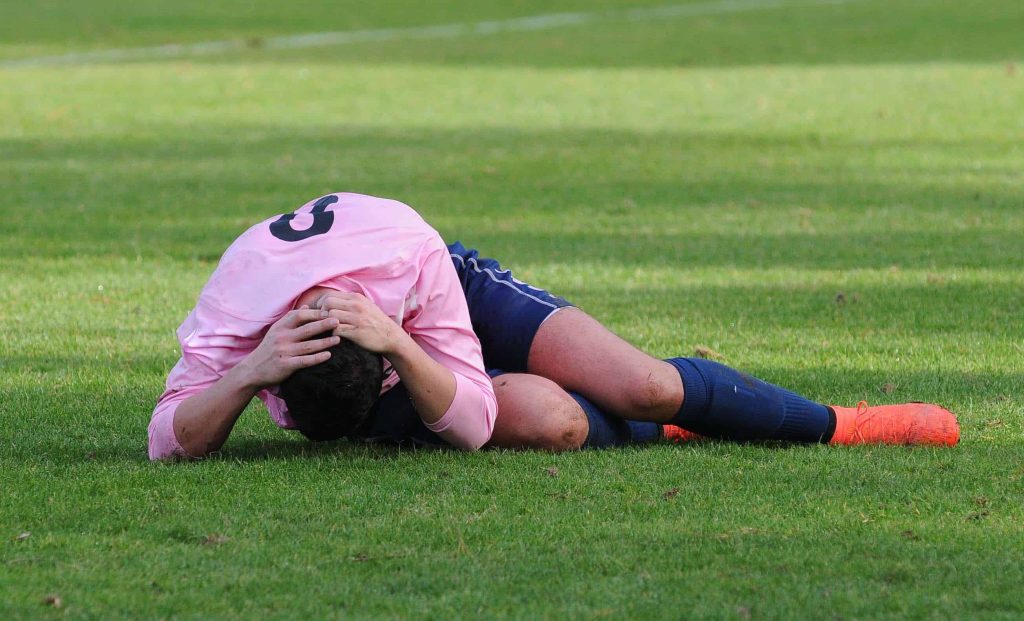
At the start of the footy season I wrote a blog about head injuries and concussion. At that point I could already tell that head injuries were likely to feature in our season this year. The boys in my son’s U10 footy team were playing with a new intensity and full tackling had started…fast forward a couple of months and our team have had several minor head injuries. So, head injuries are quite topical with me at the moment. My last blog, which can be found here, covered the common signs and symptoms of a mild head injury.
However, what I have come to realise is that whilst a lot of people understand when and how to recognise a head injury, only a few understand how important the rest and recovery period afterwards is. That is what I want to focus on in this blog.
First, I want to remind everyone to educate their children and remind themselves that if they ever get a blow to the head and then start to feel different to usual, they MUST stop their sport or activity and tell someone. Even a small blow can cause a mild head injury (or worse) depending on where and how they were hit, as well as whether they have had any previous head injuries.
Many of us are from a generation that was often told to “suck it up” and I will admit to using those words on the odd occasion. But please, if your child or someone else has been hit in the head, take time to ask them how they are feeling, if they have any pain, dizziness or other symptoms. Take time to assess the injury. Continuing to play sport or take part in a high-risk activity following a blow to the head can make the injury significantly worse.
Following a minor head injury or concussion one of the biggest mistakes many people make is returning to normal activity too early. Imagine for a minute that you had a sprained ankle that was bruised and painful. You would naturally rest it and slowly return to your usual activities as the bruising and symptoms improve. Chances are you would know that spending a day on your feet 2 days after spraining your ankle would mean it would swell and get more painful. Hopefully you wouldn’t even think of returning to play sport until you have strengthened it and slowly increased the demands that you place on your ankle day-to-day. Yet this sort of gradual return to normal activities and sport is not as commonplace with a mild head injury.
Think of a mild head injury/concussion as a “sprain” of the brain, whilst the injury is different the rest and recovery period is similar. Just like your ankle, your brain needs time to recover. Unfortunately, the injury is not a visual one. This means it is easily underestimated both by the person and by those around them.
After a mild head injury, the person usually wants to be a bit more restful for the first 24-48hrs as they may have a headache, feel dizzy, tired, sluggish, light may annoy them (to name a few symptoms). However, typically these symptoms reduce over the first few days. As they do, often the person jumps straight back into normal activity. They run and play with friends, play on the iPad or PS4, and go back to sports training. Then, they suddenly feel worse again, the symptoms come back….much like when you stand on a sprained ankle all day.
However, with a head injury any new or worsening symptoms brings with it stress and anxiety. Because occasionally the brain injury can be worse than was originally thought, it is important to get any worsening or new symptoms of a head injury urgently medically assessed to establish it was a case of over doing it and nothing else. This stress and set back could be easily avoided by respecting the injury and building back up to normal activities.
So, if one of your loved one’s sustains a mild head injury/concussion, follow these important steps:
Step 1: Listen to them and recognise the signs and symptoms of a head injury.
Step 2: Get them medically assessed.
Step 3: Help them to rest and understand the need to modify activities even for a few days after they feel normal. Remember that iPads, smart phones and gaming consoles are highly stimulating for the brain so are NOT restful.
Step 4: Follow this ‘Return to Activity’ sheet from the Royal Children’s Hospital, or the one recommended by your Dr.
Step 5: Take them to be reassessed by your Dr if you are worried, or if they have any new or worsening symptoms.
There is a great App that I recommend to any parent (or person involved in high risk activities) to help you recognise a head injury and what level of priority the medical assessment needs to be (GP, Hospital or Ambulance). It also puts together a recovery plan to help with the return to sport and activity. It is called ‘Head Check’ and more information can be found here.
Knowledge is key to having the confidence to know what to do with a head injury. A first aid course is a great way to build your knowledge and confidence around head injuries and other injury and medical related first aid. My range of courses include family first aid, nationally recognised CPR/first aid courses and tailored first aid courses.
Contact me now to find out what course would best suit your needs or book into my next Community Parent/Caregiver First Aid course on Sunday 19 August at the Glenelg North Community Centre.
Click on the link below to book now! More details can be found on my website or Facebook page.
